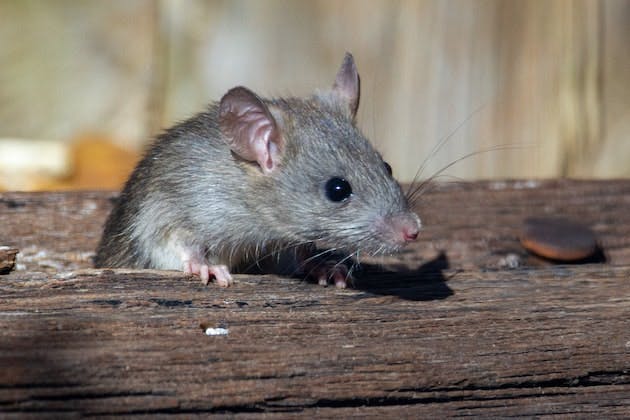Rats are more than just an unsightly nuisance—they're a serious threat to your home's safety, health, and structural integrity. These opportunistic rodents can squeeze through spaces as small as a 50 pence coin, bringing with them a host of potential diseases, property damage, and contamination risks. Every year, thousands of UK households battle rat infestations, with urban and rural properties equally vulnerable to these persistent invaders.
By adopting a proactive and informed approach, you can significantly reduce the likelihood of rats turning your home into their next breeding ground.
 Understanding Rat Infestations
Understanding Rat Infestations
Rats invade homes primarily for shelter, food, and water. These resourceful rodents are drawn to warm, secluded spaces that offer protection from predators and harsh weather conditions. Common reasons for rat infestations include:
- Easy access to food sources
- Availability of water
- Suitable nesting areas
- Gaps and holes in building structures
Recognising the signs of a rat infestation is crucial for early intervention. Key indicators include:
- Droppings: Small, dark, pellet-shaped faeces, often found near food sources or nesting areas.
- Gnaw marks: Visible teeth marks on wood, plastic, or electrical wiring.
- Unusual noises: Scratching, scurrying, or squeaking sounds, particularly at night.
- Grease marks: Dark, oily smears along walls or baseboards where rats frequently travel.
- Footprints: Visible tracks in dusty areas or mud.
Preventing Rat Infestations
Seal All Entry Points
Rats can squeeze through openings as small as 2 cm in diameter. To effectively seal entry points:
- Inspect the exterior of your home for gaps, cracks, and holes.
- Use durable materials such as steel wool, metal sheeting, or cement to seal openings.
- Pay particular attention to areas around pipes, vents, and utility lines.
- Install door sweeps and weather stripping to eliminate gaps under doors.
- Repair damaged roof tiles and seal gaps in eaves.
Keep Your Home Clean and Tidy
Maintaining a clean environment is essential for rat prevention:
- Vacuum and sweep regularly, especially in areas where food is consumed.
- Clean up spills and crumbs immediately.
- Store pet food in sealed containers and avoid leaving pet food out overnight.
- Regularly dispose of rubbish in sealed bins.
- Keep outdoor areas free of debris and overgrown vegetation.
Remove Food Sources
Eliminating access to food is crucial for deterring rats:
- Store all food, including pet food, in airtight containers.
- Use sturdy, gnaw-proof bins for outdoor rubbish storage.
- Harvest fruits and vegetables promptly from gardens.
- Clean up fallen fruit and bird seed from the ground.
- Secure compost bins with tight-fitting lids and wire mesh.
Eliminate Standing Water
Rats require water to survive. To reduce moisture and eliminate standing water:
- Fix leaky pipes and taps promptly.
- Ensure proper drainage around your property.
- Remove or cover outdoor water sources such as birdbaths or pet bowls at night.
- Clean gutters regularly to prevent water accumulation.
- Address any areas of condensation or dampness in the home.
Identifying Signs of Rat Infestations
Visual Signs
- Droppings: Fresh droppings are dark and moist, while older ones are grey and crumbly.
- Gnaw marks: Look for fresh, light-coloured wood shavings around gnawed areas.
- Runways: Rats tend to follow the same paths, leaving dark, greasy marks along walls and floorboards.
- Nests: Made from shredded materials like paper, fabric, or insulation, often found in secluded areas.
- Burrows: Outdoor rat burrows are typically 5-10 cm in diameter and located near structures or dense vegetation.
Auditory Signs
- Scratching noises in walls, ceilings, or under floorboards, especially at night.
- Squeaking or chirping sounds, particularly when rats are distressed or fighting.
- Scurrying noises as rats move around the home.
Other Indicators
- Unusual pet behaviour: Dogs and cats may become agitated or overly interested in certain areas of the home.
- Foul odours: A strong, musky smell can indicate a significant rat infestation.
- Unexplained electrical or structural damage: Chewed wires or insulation may be signs of rat activity.
Steps to Eliminate Rats
Trapping Methods
- Snap traps: Effective and quick, but require careful placement and regular checking.
- Live traps: Humane option, but rats must be released far from the property to prevent return.
- Electronic traps: Deliver a lethal electric shock and are considered humane.
When setting traps:
- Place them along walls and in areas with high rat activity.
- Use attractive baits such as peanut butter, chocolate, or dried fruit.
- Check and reset traps regularly.
Using Baits and Repellents
- Anticoagulant baits: Widely available but should be used with caution to avoid harming non-target animals.
- Ultrasonic repellents: Emit high-frequency sounds to deter rats, but effectiveness varies.
- Natural repellents: Peppermint oil, citrus oils, or ammonia can be used as deterrents, but require frequent reapplication.
Professional Pest Control
Consider professional pest control services when:
- The infestation is severe or widespread.
- DIY methods have proven ineffective.
- You lack the time or ability to implement comprehensive control measures.
- There are health and safety concerns, particularly in homes with children or pets.
Post-Infestation Measures
Cleaning and Disinfecting
- Wear protective gear, including gloves, mask, and eye protection.
- Remove all droppings, nests, and contaminated materials.
- Disinfect affected areas with a mixture of bleach and water (1:10 ratio).
- Thoroughly clean and disinfect all surfaces, including those not visibly contaminated.
- Dispose of contaminated materials in sealed plastic bags.
Repairing Damage
- Inspect for structural damage, particularly to wood, insulation, and wiring.
- Replace gnawed or damaged materials to prevent further entry.
- Seal any newly discovered entry points using durable materials.
- Consider upgrading storage solutions to prevent future infestations.
- Implement long-term prevention strategies to avoid recurrence.
By following these comprehensive steps, homeowners can effectively protect their properties from rat infestations and maintain a safe, hygienic living environment.
FAQs
Contact our pest control specialists in Hampshire
If you are based near Portsmouth, Fareham, Gosport or Hampshire, and you urgently need a rodent treatment service, then get in touch with our specialists today.
You can reach us by calling our office on 023 9309 2101 or mobile on 07501 70 2101.


